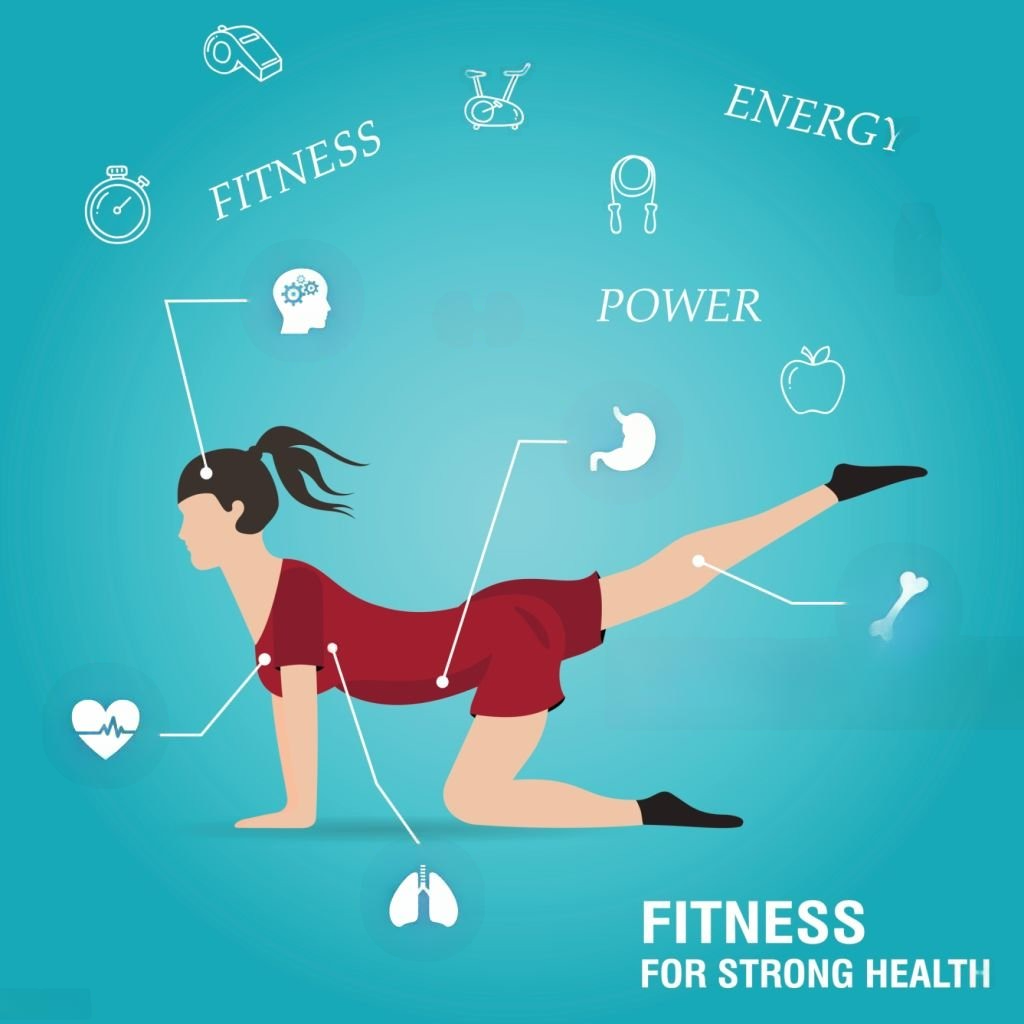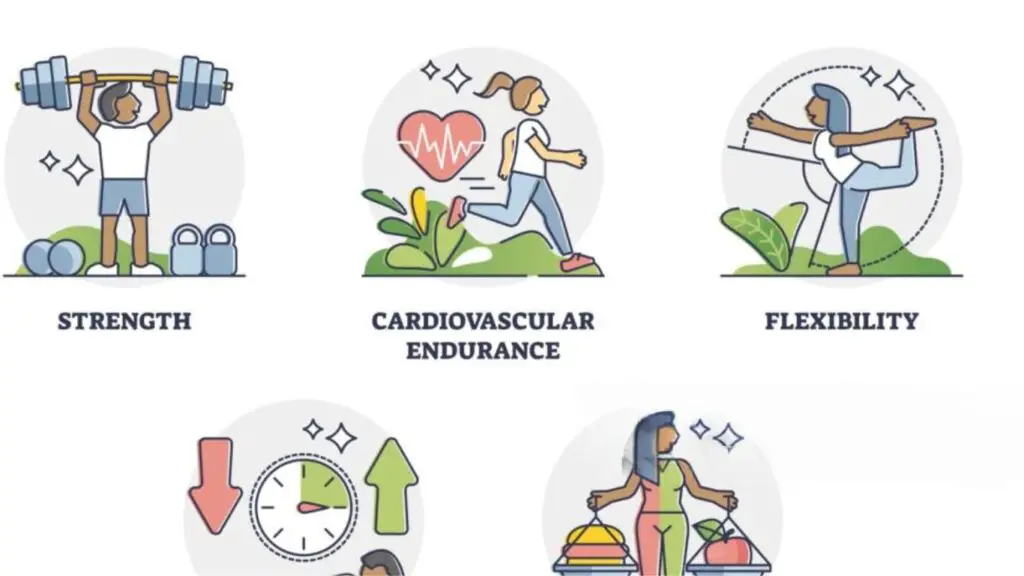You hit the gym, go for a run, or play a sport once in a while. But do you know whether you’re improving your health-related fitness or your skill-related fitness? Most people lump them together, but they’re two very different things — and understanding the difference can change how you train, how you perform, and how you live your life.
Let’s break it down using a no-fluff approach backed by real-world examples and research.
Confusion Between Health-Related Fitness
In the fitness world, these two terms — health-related fitness and skill-related fitness — get tossed around interchangeably. But they’re not the same.
Here’s the core issue:
Many people follow workout plans that don’t match their goals. Why? Because they don’t understand the difference between improving health versus improving athletic ability.
It’s like trying to improve your basketball shot by only walking on a treadmill — the wrong tool for the goal.
The Real Consequences of Mixing Them Up
So, what happens when you confuse the two?
- You plateau fast.
If you’re aiming to run faster but only doing strength training, your progress slows. You get frustrated and quit. - You risk injury.
An athlete training without proper agility or coordination drills is more likely to get injured. A sedentary person lifting weights without working on flexibility or endurance is also at risk. - You waste time.
Let’s say you want to lose weight, reduce cholesterol, or manage blood pressure. If your plan only focuses on agility or balance, you’re not hitting the systems that improve heart health or metabolism.
Here’s what the Centers for Disease Control and Prevention (CDC) says:
“Health-related fitness helps reduce the risk of chronic disease and promotes overall health. Skill-related fitness supports performance in sports and motor tasks”
When the goal is unclear, your training becomes less effective — or worse, harmful.
Differences — and Train Smarter
Let’s get practical.
What is Health-Related Physical Fitness?
This is the kind of fitness that helps you live longer, feel better, and avoid disease. It’s about supporting your body’s basic systems.
It includes five key components:
- Cardiorespiratory Endurance
- Think: running, cycling, swimming.
- It’s about how well your heart and lungs deliver oxygen.
- Why it matters: Low endurance is linked to heart disease, obesity, and stroke.
- Think: running, cycling, swimming.
- Muscular Strength
- Lifting heavy objects, climbing stairs, or carrying groceries.
- Strong muscles also protect joints and support posture.
- Lifting heavy objects, climbing stairs, or carrying groceries.
- Muscular Endurance
- Holding a plank, doing multiple reps of a light weight, or biking for an hour.
- This is about sustained effort, not maximum strength.
- Holding a plank, doing multiple reps of a light weight, or biking for an hour.
- Flexibility
- Can you touch your toes? Rotate your shoulders?
- Flexibility prevents injuries and supports full-range movements.
- Can you touch your toes? Rotate your shoulders?
- Body Composition
- This is your body fat percentage compared to muscle, bone, and water.
- High body fat can increase the risk of Type 2 diabetes, hypertension, and other chronic illnesses.
- This is your body fat percentage compared to muscle, bone, and water.
Example:
A 2020 study published in the Journal of Preventive Medicine followed 5,000 adults for 10 years. Participants with higher cardiorespiratory fitness had a 40% lower risk of dying from cardiovascular disease, even if they were overweight. The takeaway? Health-related fitness can save your life.
What is Skill-Related Physical Fitness?
This is about performance — how well your body executes specific tasks, especially in sports or high-speed environments. It doesn’t directly prevent illness, but it improves how you move.

Here are the six components:
- Agility
- Change direction quickly (e.g., soccer, basketball).
- Helps avoid collisions or improve footwork.
- Change direction quickly (e.g., soccer, basketball).
- Balance
- Stay upright and stable (think gymnastics or yoga).
- Important for older adults to prevent falls.
- Stay upright and stable (think gymnastics or yoga).
- Coordination
- Hand-eye or foot-eye sync — like catching a ball or hitting a target.
- Hand-eye or foot-eye sync — like catching a ball or hitting a target.
- Power
- Combines strength + speed. Example: jumping high or sprinting.
- Combines strength + speed. Example: jumping high or sprinting.
- Reaction Time
- How fast you respond to a signal or movement. Crucial in sports like boxing, driving, or even emergencies.
- How fast you respond to a signal or movement. Crucial in sports like boxing, driving, or even emergencies.
- Speed
- Move quickly across a space. Straight-line sprinting or dodging an opponent.
- Move quickly across a space. Straight-line sprinting or dodging an opponent.
Case Study:
A 2018 International Journal of Sports Science & Coaching study observed 300 youth athletes. Athletes with higher agility and coordination scores consistently outperformed peers in sport-specific drills — regardless of strength or endurance levels.
So, if you’re training for performance, skill-related fitness is your toolbox.
Side-by-Side: Health vs. Skill Fitness
| Category | Health-Related Fitness | Skill-Related Fitness |
| Primary Goal | Improve health, prevent disease | Enhance sports and movement performance |
| Focus Areas | Endurance, strength, flexibility, body comp | Agility, balance, coordination, reaction, etc |
| Applies to | Everyone — all ages | Athletes, performers, tactical roles |
| Example Activities | Brisk walking, swimming, yoga | Drills, sprinting, reaction training |
| Disease Prevention | Yes | Not directly |
When Should You Focus on One Over the Other?
If your goal is to:
- Lower blood pressure
- Lose weight
- Increase daily energy
- Reduce cholesterol
- Improve sleep
Focus on health-related fitness.
If your goal is to:
- Get faster for sports
- Improve coordination for dance
- Enhance reaction for tactical roles (military, fire services)
- Jump higher, move quicker
Train for skill-related fitness.

That said, the best approach blends both — especially if you’re aging, returning from injury, or just want to stay active long-term.
Weekly Routine (Sample Plan)
Here’s a practical weekly mix for someone wanting both health and skill benefits:
| Day | Focus | Example Activity |
| Mon | Cardiorespiratory + Coordination | 30-min run + agility ladder drills |
| Tue | Strength + Power | Weightlifting + box jumps |
| Wed | Flexibility + Balance | Yoga or mobility training |
| Thu | Muscular Endurance + Speed | HIIT session + short sprints |
| Fri | Core Strength + Reaction Time | Planks + reaction light training |
| Sat | Fun Sport or Group Activity | Pick-up basketball, soccer, dance, etc. |
| Sun | Active Recovery | Walking, foam rolling, stretching |
Closing the Gap: Why This Matters for Real People
Let’s say you’re 35, working full-time, and trying to stay fit. You’re not training for the Olympics. You just want to feel better, move better, and maybe play a weekend game of volleyball.
If you skip skill drills, you might trip, fall, or pull something.
If you skip health basics, you risk heart issues, chronic fatigue, and slow metabolism.
It’s not just about looking fit. It’s about functioning well.
Fitness isn’t one-size-fits-all — it’s purpose-driven.
Final Thoughts
When you understand the difference between health-related and skill-related physical fitness, you take control of your training — and your results.
Whether you’re just starting or leveling up your routine, the smartest thing you can do is match your workout with your why.
Want better health? Focus on endurance, strength, flexibility, and body composition.
Want better performance? Dial in agility, speed, coordination, and power.
You don’t need fancy equipment. You don’t need elite training plans.
You just need the right focus.

